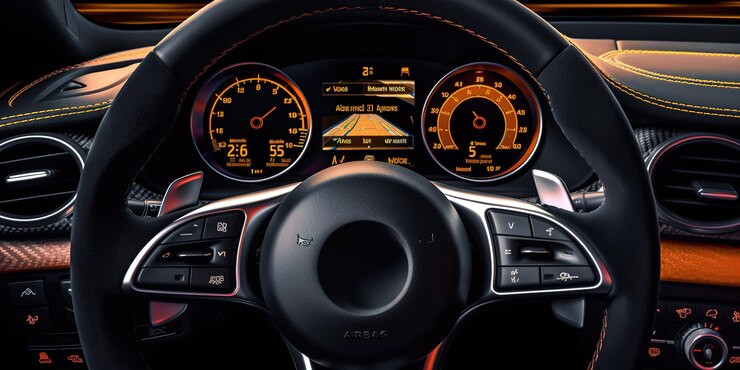Adaptive speed limiters are advanced features in modern vehicles that help drivers maintain a safe and consistent speed while on the road. These systems utilize sensors and cameras to detect speed limits and adjust the vehicle’s speed accordingly. However, like any electronic system, adaptive speed limiters can encounter issues that may trigger warning lights on the dashboard. In this article, we will explore common causes of adaptive speed limiter warning lights and provide troubleshooting tips to address them.
Understanding Adaptive Speed Limiters: Adaptive speed limiters, also known as intelligent speed assist systems, work in conjunction with speed limit recognition technology to assist drivers in adhering to posted speed limits. The system uses cameras or GPS data to identify speed limit signs and then adjusts the vehicle’s speed accordingly. By automatically adjusting the speed, adaptive speed limiters promote safer driving practices and help prevent speeding violations.
Common Causes of Adaptive Speed Limiter Warning Lights:
- Faulty Speed Limit Recognition: The adaptive speed limiter relies on accurate speed limit data provided by the vehicle’s cameras or GPS system. If the system fails to recognize speed limit signs or receives incorrect information, it may trigger a warning light.
- Sensor Issues: Sensors are integral to the functioning of adaptive speed limiters. Any malfunction or damage to the sensors responsible for detecting speed limits can cause the warning lights to illuminate.
- System Calibration: Calibration is crucial for the accurate operation of adaptive speed limiters. If the system is not properly calibrated or if it loses its calibration over time, it may lead to warning lights and incorrect speed adjustments.
Troubleshooting Adaptive Speed Limiter Warning Lights:
- Check for Obstructions: Make sure the sensors, cameras, or radar units responsible for speed limit recognition are clean and free from obstructions. Dirt, debris, or snow accumulation on these components can affect their performance. Clean them using a soft cloth and a mild cleaner if necessary.
- Verify GPS Connectivity: If your adaptive speed limiter relies on GPS data for speed limit recognition, ensure that the vehicle has a strong GPS signal. Poor connectivity or an outdated map database may cause inaccuracies in speed limit detection.
- Perform a System Reset: In some cases, a system reset can resolve temporary glitches. Refer to the vehicle’s owner manual to learn how to perform a reset procedure specific to your adaptive speed limiter system.
- Calibration: If you suspect a calibration issue, consult the vehicle’s manual or contact an authorized service center. They will have the necessary tools and expertise to calibrate the adaptive speed limiter system accurately.
- Seek Professional Assistance: If the warning lights persist or if you are unsure about how to address the issue, it is recommended to consult a qualified mechanic or dealership with expertise in your vehicle’s adaptive speed limiter system. They will have access to specialized diagnostic equipment to identify and resolve any complex issues that may be triggering the warning lights.
Remember, adaptive speed limiters are designed to assist drivers in adhering to speed limits, but they should not replace responsible driving practices or attentive monitoring of speed limit signs. If the adaptive speed limiter warning lights illuminate, it is essential to address the issue promptly to ensure the system operates accurately and promotes safer driving habits.
Adaptive speed limiter warning lights can indicate various issues, including faulty speed limit recognition, sensor problems, or calibration needs. By following the troubleshooting tips provided in this article and seeking professional assistance when necessary, you can ensure the proper functioning of your adaptive speed limiter system and enhance your driving safety by adhering to posted speed limits.











